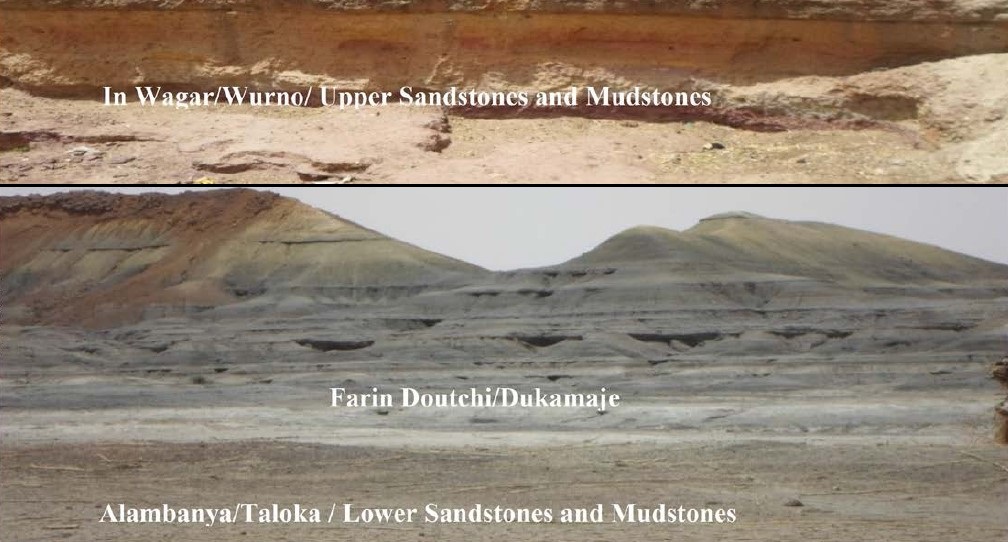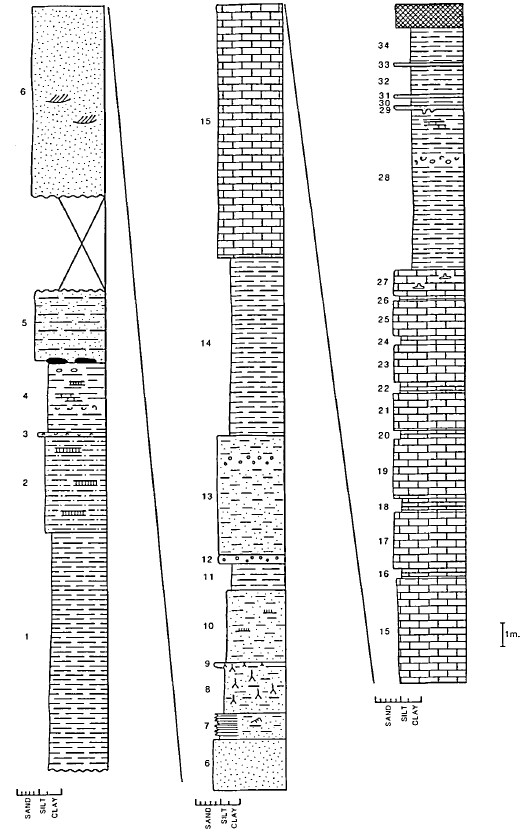Majias Gr
Type Locality and Naming
This term, introduced by Dikouma (1988), designates the regrouping of the upward succession of the Alanbanya Fm, Farin Doutchi Fm, and In Wagar Fm, to establish a parallel with the "Rima Group" of the Province of Sokoto in Nigeria.
References: Dikouma, 1988; Dikouma, 1990; Moody et al., 1991; Zaborski & Morris, 1999; Moumouni et al., 2019.
Synonym: Majia Group (misspelling); Igdaman Group (Moody & Suttcliffe, 1991).
Equivalent(s): Its lateral equivalent in the Sokoto area of Nigeria is called the Rima Gr. The Majias Group consists of the Alanbanya Fm, Farin Doutchi Fm, and In Wagar Fm, respectively named the Taloka Fm, Dukamaje Fm, and Wurno Fm in the Sokoto sector. The Alanbanya Fm is also called the Lower Sandstones and Mudstones, the Farin Doutchi Fm is called the Mosasaurus Shale, and the In Wagar Fm is called the Upper Sandstones and Mudstones.
Lithology and Thickness
Moody et al. (1991) describe the Majias Group (formerly known as Igdaman Group) as follows: The succession consists of siltstones and shales with intercalated bone beds and lumachelles. Low angle cross-stratification is present. The evidence is of possible tidal channels which trend east to west, the cross-stratification indicating southeast to east paleocurrent directions. Overbank silts are also recorded in the upper part of the succession. These contain abundant gypsum concretions, which may be indicative of early diagenesis due to exposure. 260 m thickness. [See also the formations within this group: Alanbanya Fm, Farin Doutchi Fm, and In Wagar Fm.] Figures:
[Figure 1. The Majias Group (Moumouni et al., 2019). The bottom photo was taken at “Mont Igdaman” and the top at Garadaoua village.]
[Figure 2. Section of the Majias Group in Touhout, near Kao, Niger (Source: Moody et al., 1991).]
Relationships and Distribution
Lower contact
Underlying unit is the Ibeceten Fm or Doutchin-Zana Fm (Figure).
Upper contact
Overlain by the Dallols Gr (Garadaoua Fm)
Regional extent
GeoJSON
Fossils
Libycoceras (ammonites). The vast majority of the vertebrate material is fish, with vertebrae as the dominant element. Turtle and titanosaurid dinosaur bones are also present. The channel deposits are divided into three units with bone-rich phosphorite at the base. Numerous complete shells of large to huge pelomedusid turtles (1-1.5 m-long) occur at the top of a bed. Most are preserved upside down, the plastron facing upwards. This position must reflect a preferred orientation related to current action; the shells deposited under quiescent lagoonal conditions.
Age
Depositional setting
Deposited during the third (Campanian to Lower Maastrichtian) and fourth (Upper Maastrichtian) marine transgressions (T3 & T4). [See also the formations within this group: Alanbanya Fm, Farin Doutchi Fm, and In Wagar Fm.]
Additional Information

